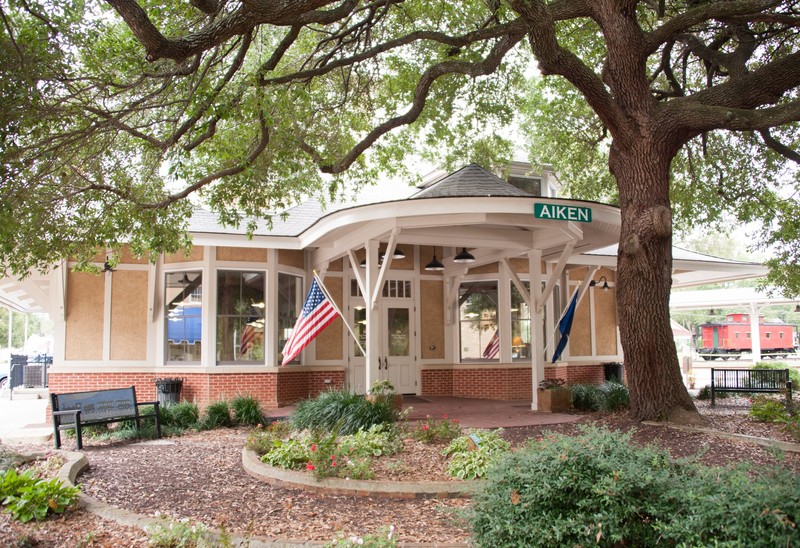City of Aiken’s Visitor’s Center and Train Museum
Introduction
Text-to-speech Audio
Images
The City of Aiken’s Visitor’s Center and Train Museum offers visitors information about the city and preserves and promotes Aiken's railroading history.

Backstory and Context
Text-to-speech Audio
The South Carolina Canal and Railroad Company was the first steam-powered commercial railroad in the country and was, at one point, the longest railroad in the world. The model train depicts the Aiken-Augusta Special train, which transported northern passengers from New York to Aiken. Aiken became a popular tourist resort for wealthy people from the northeast beginning in the late 19th century. They developed a community called the Aiken Winter Colony, which is a historic district and features many large historic homes, and participated in a variety of sporting activities. Some also raised thoroughbred horses.
The train depot was likely designed by architect Stanford White, who was a nationally known architect at that time. He designed a number of buildings in the city, including the Palmetto Golf Club clubhouse. It is believed that the death of Edith Whitney, who was the young wife of wealthy stockbroker William C. Whitney, was the reason why the depot was built. Edith was seriously injured in a horse riding accident in 1898 and was sent by train back to New York for treatment. Sadly, she died of her injuries a few months later. William Whitney apparently partly blamed her death on the train station. He thought the small size of the station helped delay her transport to New York. Whitney supported the effort to built the new station, which was completed in 1899. It was eventually demolished in 1954 when passenger service ended. The present building was constructed in 2010.
Sources
"About." City of Aiken’s Visitor’s Center and Train Museum. Accessed May 18, 2021. https://aikenrailroaddepot.org/about.
"History." City of Aiken’s Visitor’s Center and Train Museum. Accessed May 18, 2021. https://aikenrailroaddepot.org/history.
City of Aiken’s Visitor’s Center and Train Museum
